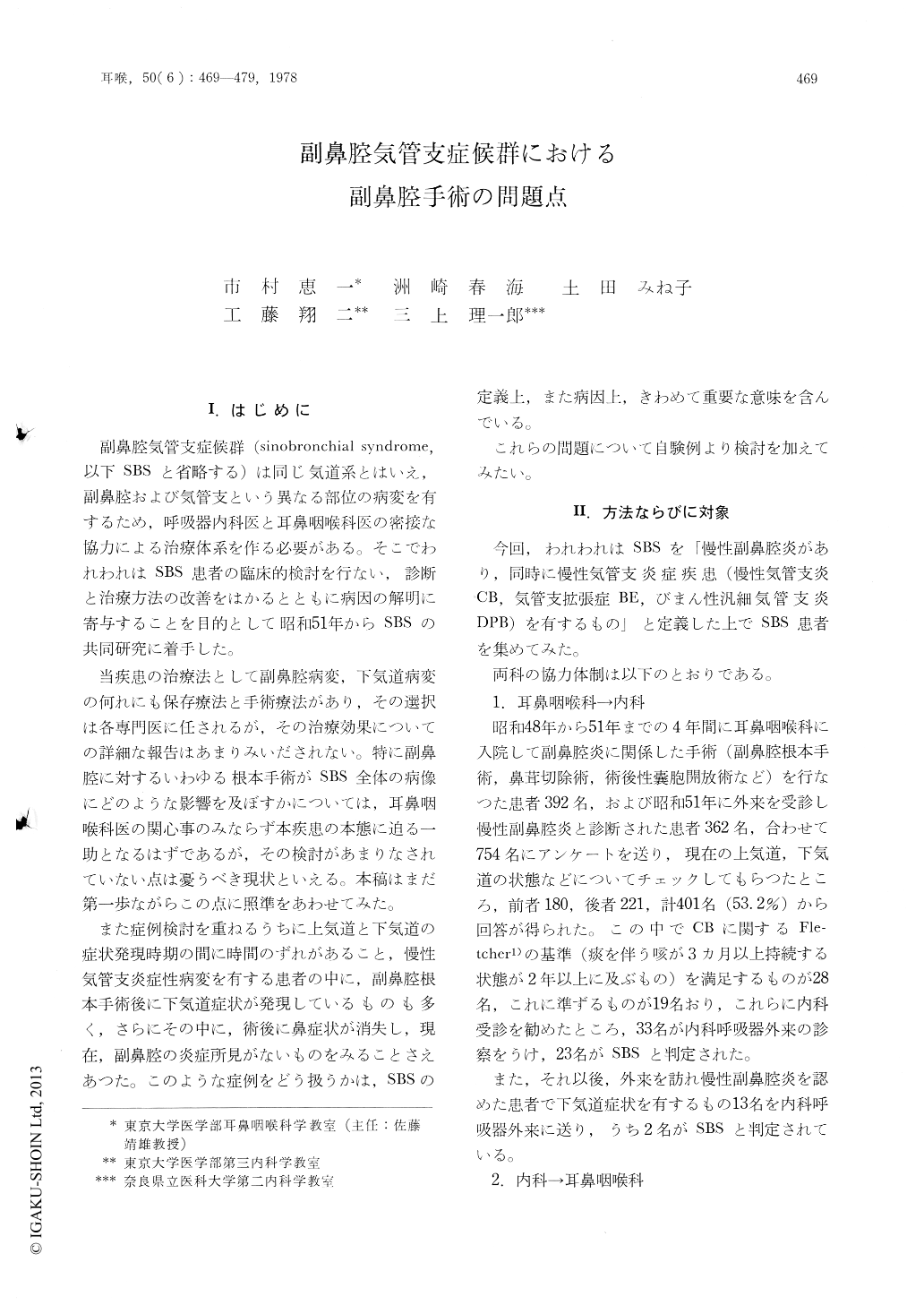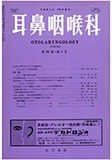Japanese
English
- 有料閲覧
- Abstract 文献概要
- 1ページ目 Look Inside
I.はじめに
副鼻腔気管支症候群(sinobronchial syndrome,以下SBSと省略する)は同じ気道系とはいえ,副鼻腔および気管支という異なる部位の病変を有するため,呼吸器内科医と耳鼻咽喉科医の密接な協力による治療体系を作る必要がある。そこでわれわれはSBS患者の臨床的検討を行ない,診断と治療方法の改善をはかるとともに病因の解明に寄与することを目的として昭和51年からSBSの共同研究に着手した。
当疾患の治療法として副鼻腔病変,下気道病変の何れにも保存療法と手術療法があり,その選択は各専門医に任されるが,その治療効果についての詳細な報告はあまりみいだされない。特に副鼻腔に対するいわゆる根本手術がSBS全体の病像にどのような影響を及ぼすかについては,耳鼻咽喉科医の関心事のみならず本疾患の本態に迫る一助となるはずであるが,その検討があまりなされていない点は憂うべぎ現状といえる。本稿はまだ第一歩ながらこの点に照準をあわせてみた。
Analysis of 44 postoperative cases of paranasal sinus surgery in relation with sinobronchial syndrome was presented.
Sinobronchial syndrome is defined as a coexisting pathology of chronic sinusitis and chronic inflammatory lesion on the bronchi (e.g. chronic bronchitis, bronchiectasis and diffuse panbronchiolitis).
There was no sex preponderance. Children were small in number in our series because of the following reasons.
1. Asthmatic or allergic bronchitis was excluded.
2. Recurrent bronchitis manifested by transient cough and expectoration was also excluded.
3. Collaboration of pediatrician was not obtained.
Nasal symptoms appeared by the age of 20 in more than 80 per cent of the patients, how-ever, no age preponderance of bronchial symptoms was observed.
The patients were classified into two groups according to their symptoms at the time of operation. In the first, 24 patients presented chronic sinusitis without lower airway symptoms. In the second, 20 patients presented sinobronchial syndrome.
The results of treatment in the second group were not satisfactory especially as far as their bronchial symptoms were concerned (only three cases were improved). This results led us to the conclusion that sinusotomy did not improved the lower airway lesion. Furthermore, there were many cases in which bronchial symptoms had appeared subsequently to sinus surgery over in the patients with "cured sinus".
To explain these facts, we assume that the essential pathology of the lower airway lesion of this syndrome existed in the bronchioles which were regarded as "silent zone".
This assumption could explain the time lag between the onset of nasal symptoms and that of bronchial ones.

Copyright © 1978, Igaku-Shoin Ltd. All rights reserved.


